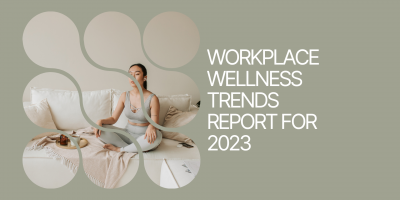
The Link Between Work Productivity and Sleep
As sleep deprivation significantly affects work performance, is the tradeoff between employees working long hours or being available 24/7 worth it?


Executive Director of Content & Learning at meQuilibrium

CEO & Co-founder of meQuilibrium

meQuilibrium Advisor & former Congressman

Ph.D., Chief Knowledge Officer & Co-founder of meQuilibrium

MD, Chief Medical Officer & Co-founder of meQuilibrium
Over a lifetime, the average person will spend 90,000 hours working; one-third of their lifespan is spent in the “workplace.” Therefore, it’s no surprise that everyday jobs can greatly impact the quality of employees’ lives, including physical and mental health. Everyday challenges in the workplace may lead to new or exacerbate existing mental health issues, such as stress, mobbing, and burnout. Even though the stigma around mental health conditions is slowly dissipating, it’s still not an easy task to address these issues.
The ongoing COVID-19 pandemic has aggravated these existing challenges, highlighting the importance of mental health support and wellbeing in the workplace.
Some of the employee wellbeing predictions were discussed with leaders at meQuilibrium – a clinically validated resilience platform leveraging behavioral psychology, neuroscience, and analytics.
“This new reality requires a whole new skill set to not just cope, but to actually feel good again in our lives. Caring for our mental health and boosting resilience are the first lines of defense in coping with constant change,” said Alanna Fincke, SVP and Head of Learning at meQuilibrium.

Even before the Covid-19 pandemic, the nation’s mental health was in a serious decline. A joint report by the Cohen Veterans Network (CVN), a national not-for-profit philanthropic organization, and the National Council for Behavioral Health, discovered that American mental health services are lacking, despite the high demand for them.
The case study was based on two research projects that included an online survey of 5,000 Americans and an assessment focused on measuring patients’ access to mental health services. The criteria used for measurement were:
The results were discouraging, with six in ten, 56%, seeking or intending to seek mental health services for themselves or a loved one. The majority of people in this group were younger, coming from lower-income households, and most had a military background. Once we put in perspective that 76% of Americans believe that mental health is just as important as physical health, it becomes clear that this was a major issue and that the pandemic only increased its visibility.
Furthermore, 74% believe that even though mental health is important, mental health services are not accessible to everyone, and 47% of them say that the options are limited. Hence, the discussion centers around the barriers Americans face when they decide to seek help, like:
The biggest disparity between the number and the access to mental health providers is based on income and location. 53% of Americans that wanted to seek treatment but couldn’t come from low-income households.
There are various mental health challenges and disorders, each with unique signs and symptoms in different people. It‘s important to note that mental health challenges can affect anyone. They can change the way a person feels, thinks, and behaves. Some of the most common mental health issues at the workplace include:
Whether work-related or not, accumulated stress can have mental and physical effects on a person’s wellbeing. The people affected can display low motivation levels, low job satisfaction, tiredness, irritation, and feeling overwhelmed in general.
Up to 80% of the workers in the U.S. would describe their job as stressful, and nearly half of them say they need help in learning how to manage it. Moreover, stress is responsible for the absenteeism of approximately 1 million employees every day.
Stress-related issues are especially common in workplaces with inadequate organizational structures and a lack of support from managers.
Other culprits, such as strict deadlines and working under pressure, only worsen these symptoms. While a “no stress” workplace is a utopian concept, there are still numerous ways individuals and companies can handle stress more effectively.
Burnout can have a major impact on a person’s physical and mental health. It affects the workplace, with employees showing decreased performance and productivity levels. Prolonged stress, excessive work hours, and heavy workload are some of the causes.
23% of employees reported feeling burned out at work very often or always, and 44% said to feel that way sometimes, meaning almost two-thirds of full-time workers experience burnout in the workplace.
Workplace harassment or workplace bullying is mistreatment from others in the workplace. It can include verbal, nonverbal, physical, or psychological abuse, leading to both physical and mental issues.
It is important to know which behaviors are considered unacceptable and communicate them within the organization. According to the position of the person who mistreats others, there are three common types of mobbing in the workplace:
Statistics show that depression is the leading cause of disability worldwide. It is often hard to distinguish it from other mental issues, and its symptoms can often be misinterpreted.
However, depression can be successfully treated with early recognition, support, and intervention; with help, 80% of the people with clinical depression improve their symptoms within four to six weeks.
The above-mentioned mental health challenges affect not only individuals but also companies and economies. For instance, together with depression, anxiety costs the global economy $1 trillion in lost productivity.
Therefore, companies are searching for solutions to cut costs and, most importantly, provide adequate mental health support for employees whenever they may need it.
“The biggest challenge facing employers in 2022 is to be able to predict and prevent employee mental health problems early – before they have a negative impact – and create a culture of mental wellbeing,” said Jan Bruce, CEO and co-founder of meQuilibrium.
“By taking workplace mental health seriously and working to predict who is at risk, we will see a payoff in improved work performance and a profound change in organizational performance. Employers will look to data-driven insights to understand the mental resilience of their workforce and address vulnerabilities proactively,” she added.
Even before the global pandemic hit, there were shifts in some of the existing trends in the workplace. More and more employees became aware of the importance of practicing positive mental health habits at work and abandoning toxic practices such as the culture of workaholism, perfectionism, excessive competitiveness, toxic positivity culture, and more.
Gen Z has also played a significant role in changing the rules in the workplace. Namely, when generation Z members are job hunting, they prioritize employers that value and support mental health in the workplace. Thus, putting the work-life balance highest on their list of priorities.
One of the world’s leading voices on mental health and addiction, meQuilibrium advisor and former Congressman Patrick Kennedy, agrees with this:
“Younger generations are embracing mental health like never before. This isn’t just great in terms of awareness and anti-stigma; it’s great in terms of the pressure they will ultimately put on health care systems (often via their employers) to move to an integrated model of care that treats the body and the mind. I’m encouraged to see this progress – and excited to see the beginnings of a massive cultural shift in our society.”
The global COVID-19 pandemic acted as a catalyst to the existing situation. Statistics show that before the pandemic, 1 in 5 people in the U.S. had some kind of mental health issue. With the pandemic still ongoing, these numbers continue to rise.
Social distancing, the anxiety of getting sick, lockdowns, isolation periods, lowered productivity, loss of income, and the fear of the uncertain future have all taken a toll on mental health.
Together, these ideas illustrate the importance of a mental health policy providing employees access to mental healthcare and promoting workplace wellbeing.
Even after the initial outbreak of COVID-19, the stigma around mental health still exists, especially in the work environment. However, in many cases, the pandemic improved communication between HR managers, employees, and leadership and created open and supportive discussions opportunities.
Today, more than ever, companies understand that it is their responsibility to promote mental health and wellbeing in the workplace.
Some of the best practices include:
This tendency of companies promoting and supporting mental health will rise in the years to come. AS Andrew Shatte, Ph.D., Chief Knowledge Officer at meQuilibrium, explains:
“The next decade will be exemplified by organizations trying to stem the mental illness tide. To be successful, they will need to get to the root cause. They will need to renegotiate the basic employer-employee social contract. They will need to equip their people with the tools of resilience. They will need to work on creating corporate cultures of resilience from top to bottom. The next twelve months will determine which organizations emerge on the right side of history and which do not.”
Addressing mental health in the workplace requires various actions intertwined into an individual yet holistic approach. Some of the ways employers and companies can promote positive mental health in the workplace include:
By implementing these approaches, companies can support all employees, especially those who suffer from mental health challenges and disorders.
Moreover, especially after the COVID-19 pandemic, there is a need for reimaging physical, mental, and spiritual health within the workplace. Adam Perlman, MD, Chief Medical Officer, and co-founder at meQuilibrium, agrees:

Addressing mental health in the workplace requires various actions intertwined into an individual yet holistic approach. Some of the ways employers and companies can promote positive mental health in the workplace include:
When left untreated, mental health issues can lead to more serious conditions. Therefore, timely treatment can be a crucial step towards managing, preventing, and reversing mental health challenges.
By supporting mental health in the workplace, companies contribute to having motivated, happier, and healthier employees, which translates into:
Lastly, investing in their employees’ wellbeing reduces costs for companies.
The WHO report on Mental Health in the Workplace shows that for every $1 invested for treatment for common mental health challenges, there is a return of $4 in health and productivity improvement.

Mental health is of the utmost importance, especially in these challenging times, whether the pressure is caused by the pandemic, work, or personal life. Therefore, companies must prioritize mental health in the workplace and create a respectful and productive work environment, enabling employees and organizations to thrive.
SEO Manager at Shortlister
Browse our curated list of vendors to find the best solution for your needs.
Subscribe to our newsletter for the latest trends, expert tips, and workplace insights!

As sleep deprivation significantly affects work performance, is the tradeoff between employees working long hours or being available 24/7 worth it?

Whether it’s through the use of technology, a focus on mental health, or a greater emphasis on DEI efforts, these workplace wellness trends provide exciting opportunities for businesses.

From benefits types to designing personalized packages, discover how a strategic approach to benefits can favor both the personnel and the employers.

Empower your remote employees with practical tips and innovative approaches to prioritize their health and well-being, ensuring workers’ professional and personal development.
Used by most of the top employee benefits consultants in the US, Shortlister is where you can find, research and select HR and benefits vendors for your clients.
Shortlister helps you reach your ideal prospects. Claim your free account to control your message and receive employer, consultant and health plan leads.